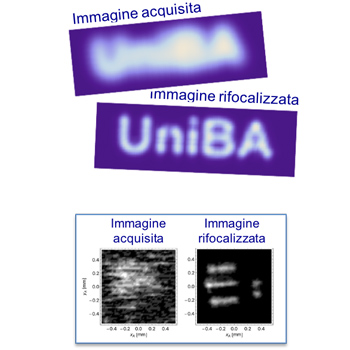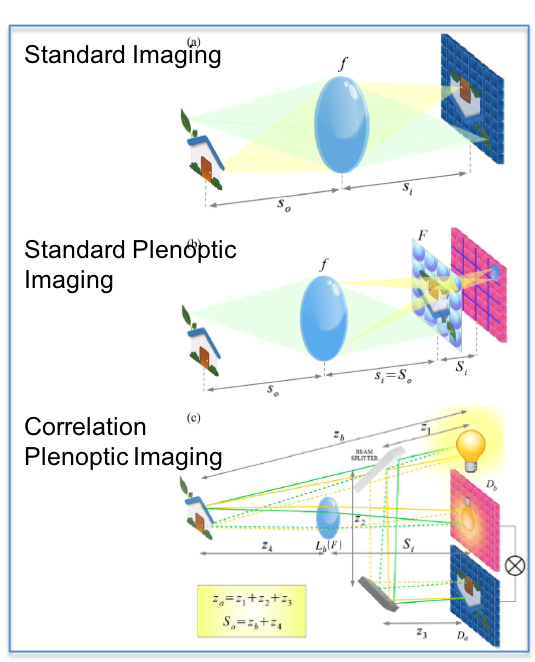Plenoptic imaging devices enable to simultaneously capture the image of a given scene and to detect the propagation direction of light; as a consequence, the user can refocus, in post-processing, out-of-focus parts of the scene, and reconstruct 3D images with an apparatus that is compact, not expensive and easy to use. Despite the growing popularity in fields such as biomedical imaging, industrial inspection, space imaging, state-of-the-art plenoptic imaging devices are intrinsically limited by a strong tradeoff between the gain in precision in determining light direction and the consequent loss of image resolution. The actual use of current devices is therefore strongly limited, especially in contexts in which microscopic resolutions are required. The development of a plenoptic imaging device that overcomes the tradeoff between image resolution and depth of the volume reconstructed in 3D, determined by directional resolution, is of relevant social interest. Actually, such a device could be integrated in instrumentation for medical diagnosis, as well as scientific research. The capability to obtain high-resolution images with smaller acquisition times compared to the current technologies.

















